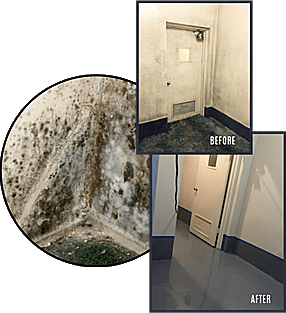
- October 28, 2019
The Mold and the Options for the Mold Remediation
So that it does not happen again, you must be aware of the amount of water that you apply to the plants and even if they are indoor, take them outside at least fifteen minutes every day, so that the soil dries and moisture does not concentrate.
Another reason why your plants may be fungal is that perhaps the soil they came with was already infested, so when you enter a plant home, change the soil to a sterile one where fungi cannot germinate. The Complete Detail mold remediation service helps you here.
Nail mold
Nails can be very prone to an excessive number of bacteria and fungi, and once it is affected it breaks easily and changes color.

It can be easily confused with fungal nails, but unlike this, it has a greenish tone on the nails instead of yellowish. It is usually originated when gel or false nails are used for a long time and they have suffered filtering of dirt that remains stagnant, causing them to decompose and humidify.
Imagine everything that can remain there: food, dust, creams, makeup, mites, basically everything you touch during the months you have your nails on. All this prevents the nail from perspiring and is vulnerable to the appearance of fungus.
The article that may interest: How to relieve runny nose
If you realize in time that you have a slight lifting of the false nail it is best to remove it and do it again, but do not apply glue yourself or anything like that, because otherwise you will simply seal the moisture and accelerate the process.
If you already have the nail infected by the fungus, the only option to destroy the fungus will be to file the nail or cut it, in addition to having special attention, applying hydrogen peroxide, vinegar, or chlorine, tea tree oil and little by little, while the new nail grows, the sick will disappear.
Mold in food
When we hear the word mold, the first thing we do is think about all the health risks it entails, and the thousand and one ways we have to remove the fungus from our belongings. But really, mold is sometimes included in our diet and we consider it a delight. So where is the line that separates the fungi that we can eat from those that don’t?
Any food is an ideal home for mold, settling in those foods where bacterial growth is less favorable, that is, with low PH, low humidity, lots of salt, or many carbohydrates, according to a study on techniques for the Microbiological Analysis of Foods developed by the National Autonomous University of Mexico.
Actually, not all molds are bad, a great example is a penicillin, which although it kills other bacteria, the human being has no harmful effects. Other types are yeasts and those used to ripen cheese or ferment soybeans and yogurt.
But there are also other types of harmful mold, and incredibly, foods that although they have it, removing them with a knife is enough to make it a suitable food to eat.
Mold in sausage
Some cases are sausages, such as sausage, cheese or cured ham, some vegetables and fruits with little water, which really do not reach the inside of the food, such as carrots or cabbage.
